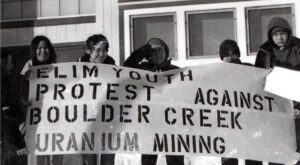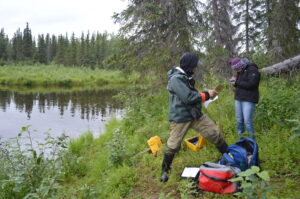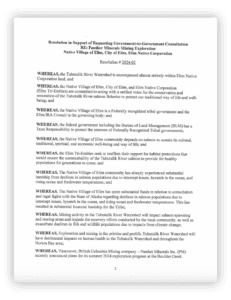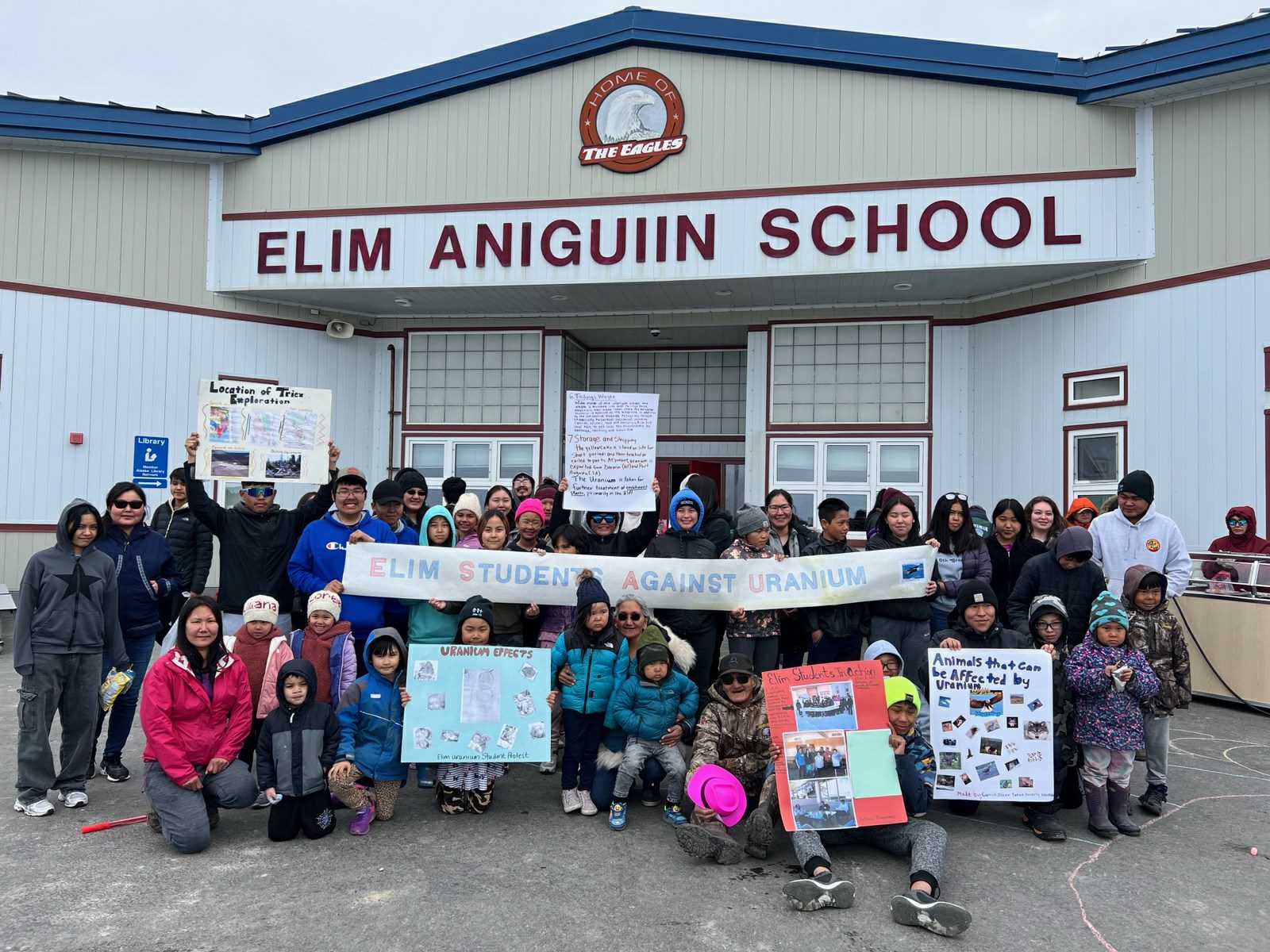The Native Village of Elim has passed a resolution seeking government to government consultation in regards to Panther Minerals’ Boulder Creek uranium exploration program. The resolution passed 20-0 at a tri-entity meeting with the City of Elim and Elim Native corporation held on May 30.
The Canadian mining company’s summer exploration program has been the subject of opposition since news broke of their plans. The program seeks to confirm uranium deposits, currently estimated to total approximately one million pounds, about 30 miles north of Elim.
The village’s concerns are rooted in the potential contamination of subsistence resources, namely the Tubutulik River that supplies water to the village’s watershed. The resolution notes that the village of less than 400 people “depends on salmon to sustain its cultural, traditional, and economic well-being and way of life.”
Protests
Residents of the area have protested uranium mining as far back as 2007 when the Boulder Creek property was being explored by a different company, Triex Minerals. Emily Murray recalled that to her surprise, it was young students in Elim that led the charge.
“The high school students had very in-depth research on what it does to the animals, what it does to the environment. And then we went all the way down to the kindergarten,” Murray said.
As part of their research, two Elim students attended a Western Mining Action Network conference in New Mexico. There, the students heard stories from tribes whose lands have been disrupted by uranium mining activities. According to Murray, one speaker shared that after swimming in a river his childrens’ skin peeled off due to the high toxicity of the water.

The “Elim Students Against Uranium” coalition was formed and the group presented their research to the community. A sign created by the students is intact to this day, saved in storage for the next time a mining company sought to explore the Boulder Creek property.
Murray expressed deep concern over any potential contamination of the Tubutulik River, a resource critical to the unique economic system tribes in the region rely on.
“We have a subsistence economy with a cash overlay. Our subsistence economy is what puts food on the table, that’s the one that makes us rich,” Murray said.
Encapsulating what the land means to the people of Elim, Murray invoked the words of elder Esther Murray.
“Munaqestavut. Our land, the one that cares for us,” Murray recalled.
Click the play button to hear Emily Murray pronounce the phrase.
Water Testing

Hal Shepherd serves as a consultant for tribes seeking help with water quality testing. Shepherd, alongside Elim’s Watershed Coordinator Leigh Takak, conducted surveys of the Tubutulik River beginning in 2014.
Testing included sampling for heavy metals, temperature, and oxygen levels to collect baseline values for the river before any mining activities began. The duo also monitored water flow with the hopes of obtaining an Instream Flow Reservation from the Alaska Department of Fish and Game.
“What you’re trying to do is protect sufficient water that salmon would need in the habitat. You, mining company, cannot take that water out of the river,” Shepherd said. “So it’s a certain amount of water that needs to stay in the river to protect the habitat.”
The testing is expensive; requiring bush planes, specialized equipment, and supplies for weeks spent in remote areas. In 2019, funding from the Bureau of Indian Affairs and US Fish and Wildlife Service ran dry. Then, in 2020 COVID-19 hit and the surveys came to a halt. Shepherd hopes that with new funding they’ll be able to resume testing this summer.
The Future

The urgency of the situation is underscored by the swift timeline set forth by Panther Minerals. The company announced their plans for the exploration program in a press release distributed on May 6. In it, the company shared that they planned to arrive in the region in June, just one month later.
David Hedderly-Smith, owner of federal mining claims in the Boulder Creek area and paid consultant for Panther Minerals, asserted his commitment to transparency in a voicemail sent to KNOM.
“We’re not trying to sneak this by anybody, we want to be pretty forthright about what we’re doing,” Hedderly-Smith said.
Hedderly-Smith’s statement stands in contrast to the resolution passed by the Native Village of Elim, with the village expressing that they have not been rightfully consulted. As the resolution notes, the Bureau of Land Management (BLM) “has a Trust Responsibility to protect the interests of Federally Recognized Tribal governments.”
Mining claims in the Boulder Creek area sit on federally owned land that the BLM oversees, prompting the village to request the agency to “engage in Government-to-Government consultation prior to authorizing any activity”. The resolution goes on to request that any application by Panther Minerals related to mining activity regarding the Boulder Creek property be denied.
Representatives from Elim, including Murray, have started traveling to nearby villages to gather additional support for the resolution. They hope to encourage villages to adopt similar resolutions opposing the prospective uranium mine.





